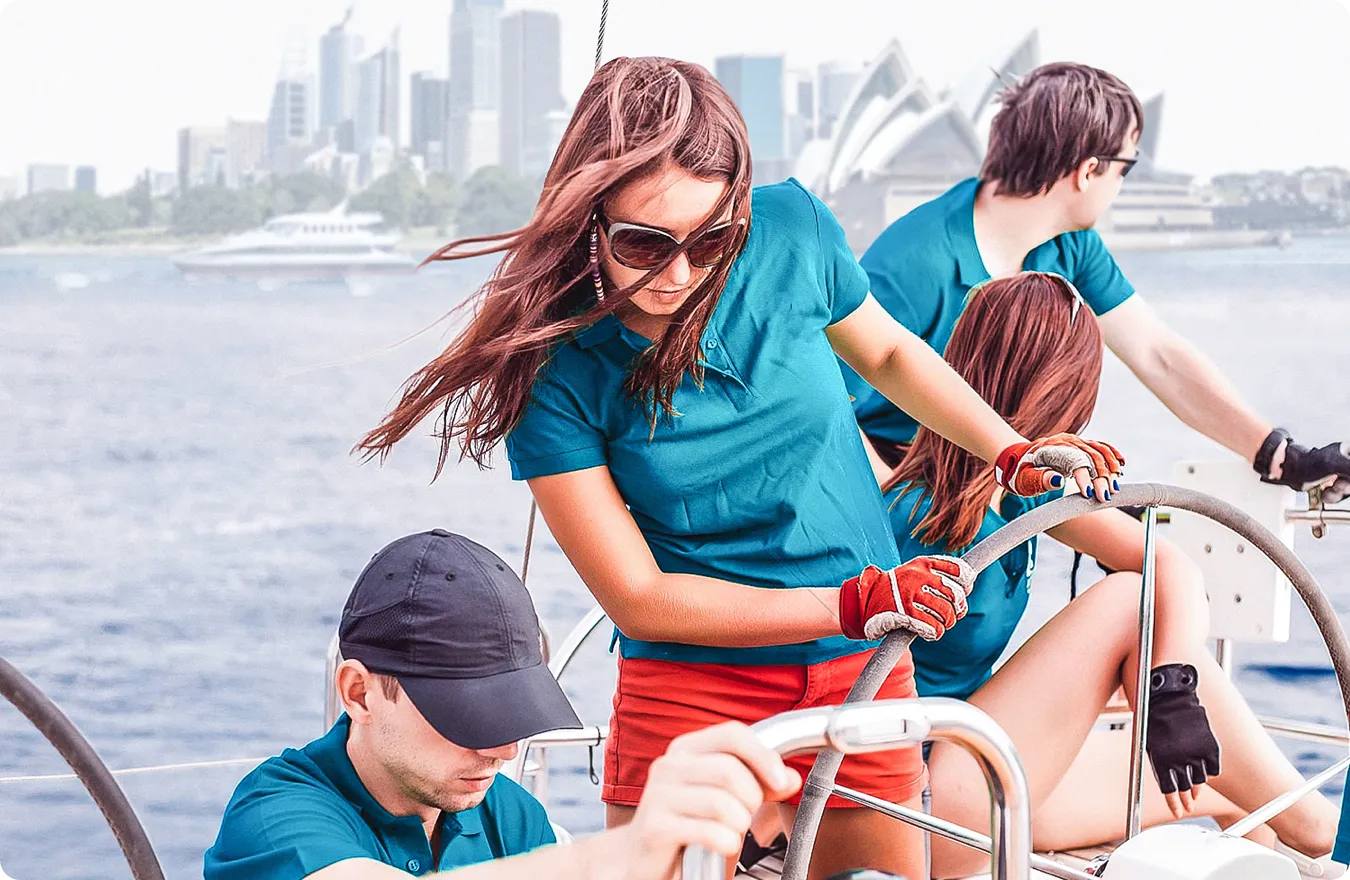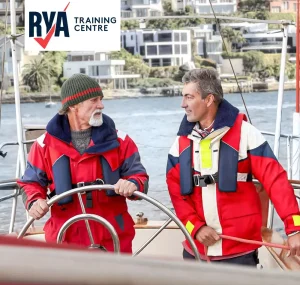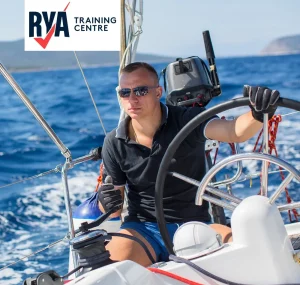You will gain knowledge of basic stability and buoyancy and can prepare a cruising vessel by conducting essential engine checks, securing gear on deck and below, and selecting sails as required.
CategoryRYA Cruising Courses / Intermediate / On Water Practical

The RYA Day Skipper Practical Sailing course is designed to teach aspiring skippers how to take charge of a cruising yacht in familiar waters during daylight hours. Over five days, you’ll gain hands-on experience in navigation, pilotage, boat handling, and seamanship under the guidance of an instructor.
The course focuses on building confidence and decision-making skills while managing a crew and sailing safely. Ideal for those who have completed the shorebased theory course, it’s the next step toward becoming a competent and independent skipper. Successful completion leads to the RYA Day.

You will gain knowledge of basic stability and buoyancy and can prepare a cruising vessel by conducting essential engine checks, securing gear on deck and below, and selecting sails as required.

You can prepare anchors, mooring warps, and handle mooring, anchoring, weighing anchor, and slipping berths. Under sail, you will be able to reef, shake out reefs, and change sails to suit prevailing conditions.

You will know the uses and limitations of AIS, understand how to work up DR/EP and account for set, drift, and leeway, and be able to plot visual fixes, use electronic aids, estimate tidal effects, employ waypoints/routes, follow IALA buoyage, and maintain navigational records.

You can prepare and execute pilotage plans for entering or leaving harbour, using leading and clearing lines, transits, and soundings to navigate safely in confined or busy waters.

You will understand how to interpret shipping forecasts, use a barometer for weather insights, and be able to source relevant forecast information for planning passages.

You can demonstrate awareness of other water users in both open water and close quarters, applying the International Regulations for Preventing Collisions at Sea effectively.

You will learn the properties of common synthetic-fibre ropes, understand basic maintenance tasks, and be able to carry them out to keep the vessel in sound condition.

You will gain a working knowledge of preventing common engine faults, understand the need for regular checks and proper spares, and be able to perform pre-/post-operation inspections, clean filters, estimate fuel usage, and troubleshoot minor issues.

You will understand how to provision the vessel appropriately for the planned passage, ensuring adequate supplies and balanced options for the duration.

You will learn how to recognize and respond to distress signals, operate a life raft, handle tow operations, manage helicopter rescue, understand cold-water shock, and provide casualty aftercare. You can also take the correct action as skipper to recover a man overboard.

You will understand how waves affect handling and crew comfort, learn about different hull/propulsion types, and be able to steer in confined spaces, anchor accurately, berth alongside, leave a berth, pick up a mooring buoy, and (for motor vessels) operate power and trim tabs.

You will understand keel characteristics, wind/current influences, and suitable sail plans, and can safely approach and leave a mooring buoy, anchor under sail, and steer and trim sails on every point of sail.

You will know about marina locks, understand the limitations of chart plotters or GNSS, and be able to plan and conduct a coastal passage, taking into account relevant hazards, the vessel’s capabilities, and crew strength.

You will gain experience cruising at night, understand special pilotage considerations, and can maintain a vigilant lookout while identifying navigational marks in the dark.
Designed for aspiring skippers and committed crew members alike, this comprehensive course develops the essential knowledge, understanding, and practical skills needed for safe and competent cruising. You’ll begin with Preparation for Sea, exploring basic stability and buoyancy for small vessels before learning how to prepare a cruising yacht—conducting engine checks, securely stowing gear, and selecting sails if under sail. From there, Deck Work covers anchoring, mooring, and handling lines, including techniques for reefing and changing sails in varying conditions.
A thorough Navigation segment builds proficiency in chartwork and passage planning, including Dead Reckoning, Estimated Positions, AIS usage, and tidal estimations. You’ll learn to handle electronic and secondary position fixing, maintain navigational records, and deploy echo sounders effectively. Under Pilotage, you’ll plan entries and departures from harbours using leading and clearing lines, transits, and soundings, while Meteorology teaches you to interpret shipping forecasts, use a barometer as a forecasting aid, and source reliable weather information.
The course delves into Rules of the Road to ensure awareness of other water users and practical application of collision regulations in close quarters and open sea. You’ll also cover Maintenance and Repair Work, focusing on synthetic-fibre rope properties and basic upkeep tasks. A comprehensive unit on Engines helps you prevent common faults, complete essential checks, and troubleshoot basic problems—vital knowledge for extended passages. Victualling details how to provision a vessel, tailoring supplies to crew strength and duration at sea.
In Emergency Situations, you’ll learn how to issue distress signals using flares and VHF, launch life rafts, handle helicopter rescues, manage cold-water shock, and undertake correct man-overboard recovery as skipper. Handling under Power addresses boat control in varied hull and propulsion setups, with practice manoeuvring in confined spaces, berthing, anchoring, and picking up mooring buoys. Sailors tackle Yacht Handling under Sail, learning to adapt sail plans for wind and current, bring a boat safely to and from a buoy, and steer or trim sails effectively on all points.
Finally, Passage-making introduces planning for coastal voyages, integrating navigational hazards, marina lock usage, chart-plotter advantages and limitations, and crew considerations. The course concludes with Night Cruising, where you’ll gain experience in after-dark arrivals and departures, learning special pilotage strategies, lookout procedures, and the identification of navigational aids by night. By the end, you’ll possess a solid command of both theory and practice, fully prepared for the diverse challenges of cruising at sea.


Let us know how we can help you, simply fill out the details below.
Please fill out the form below to receive price details
Let us know how we can help you, simply fill out the details below.